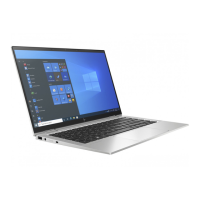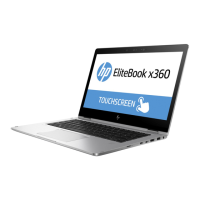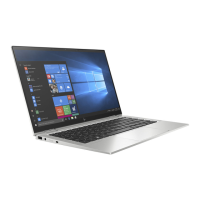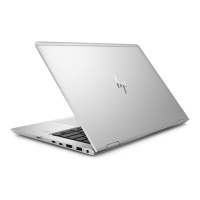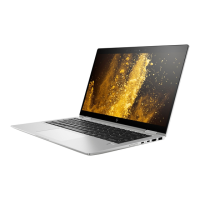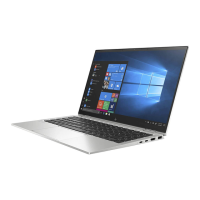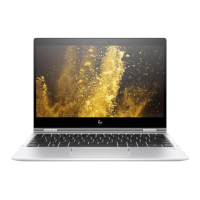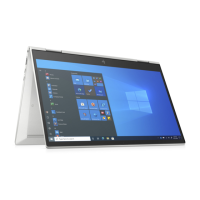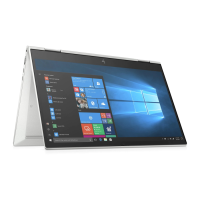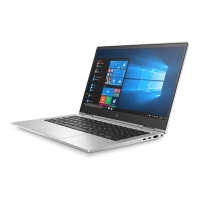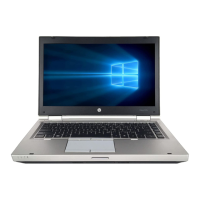Do you have a question about the HP EliteBook x360 1030 and is the answer not in the manual?
Locates resources like setup guides, warranty information, and regulatory notices.
Identifies installed hardware and software using system tools.
Details ports and connectors on the right side of the computer.
Details ports and connectors on the left side of the computer.
Identifies display elements like webcam, microphones, and antennas.
Covers the TouchPad, its buttons, and the NFC area.
Explains the status of various indicator lights on the keyboard.
Describes the fingerprint reader for secure login.
Explains special keys, action keys, and hot keys for system functions.
Identifies bottom components like speakers and vents.
Explains the location and purpose of various computer labels.
Provides instructions for inserting a SIM card.
Guides on connecting to WLAN, Wi-Fi, and Bluetooth networks.
Details using mobile broadband for internet access.
Steps to pair and connect Bluetooth devices.
Instructions for establishing a LAN connection using a network cable.
Explains navigation using TouchPad and touch screen gestures.
How to use the physical keyboard and mouse for navigation.
Instructions for using the virtual keyboard.
How to share information wirelessly using NFC.
Details on using the built-in webcam for video and photos.
Connect speakers, headphones, or headsets for audio output.
Adjusting volume, system sounds, and audio devices.
Connecting external displays for video output.
Connect to wireless displays using Miracast technology.
Procedures for safely powering off the computer.
Fast charging capabilities for the computer's battery.
Configures sleep, hibernation, and power button behavior.
Monitors battery charge and power plan status.
Secures the computer upon waking from sleep/hibernation.
Information on battery status, diagnostics, and life optimization.
Strategies for low battery issues and power saving.
Connecting the computer to AC power for charging.
Overview of security features and potential risks.
Explains password types for system and Windows access.
How to set administrator and user passwords in Windows.
Configures BIOS passwords like Administrator and Power-on.
Steps to set, change, or delete BIOS administrator passwords.
Manages hard drive protection features.
Configures DriveLock with user passwords for hard drive security.
Uses fingerprint or infrared camera for secure login.
Protects the computer from viruses, malware, and unauthorized access.
Updates operating system and applications for security and performance.
Utilizes HP software and cables for enhanced computer security.
Enhances computer speed using Disk Defragmenter and Cleanup.
Optimizes hard drive performance by defragmenting files.
Frees up disk space by removing unnecessary files.
Safe methods for cleaning computer surfaces.
Tips for safely transporting or shipping the computer.
Guides on creating system backup discs or USB drives.
Options for system recovery and restoring factory state.
Utilizes HP Recovery Manager for system restoration.
Prerequisites and important information before system recovery.
Steps to use recovery media for system restoration.
Modifies the startup sequence for boot devices.
Frees up hard drive space by deleting the recovery partition.
Accessing and configuring system BIOS settings.
Resets BIOS settings to their original factory defaults.
Procedures for updating the system's BIOS firmware.
Instructions for downloading and installing BIOS updates.
Dynamically selects boot device for current startup sequence.
Configures Trusted Platform Module settings for enhanced security.
Manages BIOS protection and recovery technology.
Runs diagnostic tests on computer hardware components.
Instructions to download and create the HP UEFI support environment.
Details power requirements for international travel.
Specifies temperature and humidity limits for operation.
Lists technologies supporting users with disabilities.
Provides contact information for technical and accessibility support.
| Processor | Intel Core i5 or i7 (7th or 8th Gen) |
|---|---|
| Display | 13.3" diagonal FHD (1920 x 1080) touch or UHD (3840 x 2160) touch |
| Graphics | Intel UHD Graphics 620 or Intel HD Graphics 620 |
| Operating System | Windows 10 Pro |
| Battery Life | Up to 16 hours |
| Ports | 1 x USB 3.1, HDMI, headphone/microphone combo |
| Wireless | Intel Dual Band Wireless-AC 8265, Bluetooth 4.2 |
| Audio | Bang & Olufsen, dual speakers |
| Webcam | 720p HD camera |
| Security | TPM 2.0 |
| RAM | 16GB |
